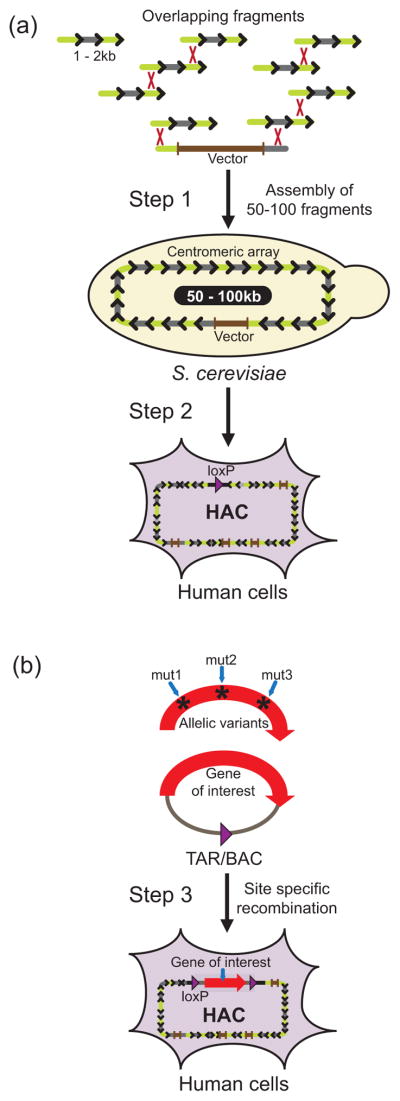Fig. 5.
Coupling of TAR gene cloning technology with the HAC gene delivery and expression system. (a) Amplification of synthetic alphoid DNA repeats for HAC construction by TAR cloning. Step 1: Amplification involves two sub-steps: rolling-circle amplification (RCA) of 340 bp alphoid DNA dimers to 1–2 kb tandem repeats (direction of repeats is shown by arrows) and co-transformation of the TAR vector and a mixture of the overlapping tandem repeats followed by end-to-end recombination through interaction of the recombined fragments with the TAR vector hooks that results in the rescue of large alphoid arrays up to 100 kb in size as circular molecules. The vector contains a yeast cassette, a mammalian selectable marker (the Neo or BS gene), and a BAC replicon. Step 2: After transfection into human cells, both the synthetic and natural arrays are capable of de novo HAC formation. To convert a HAC into a gene delivery vector, a unique loxP gene loading site is inserted. (b) Step 3: Loading of a TAR-isolated gene allele (mut1, mut2 or mut3) of a gene of interest into the loxP site of the HAC gene delivery vector by Cre-loxP mediated recombination.

